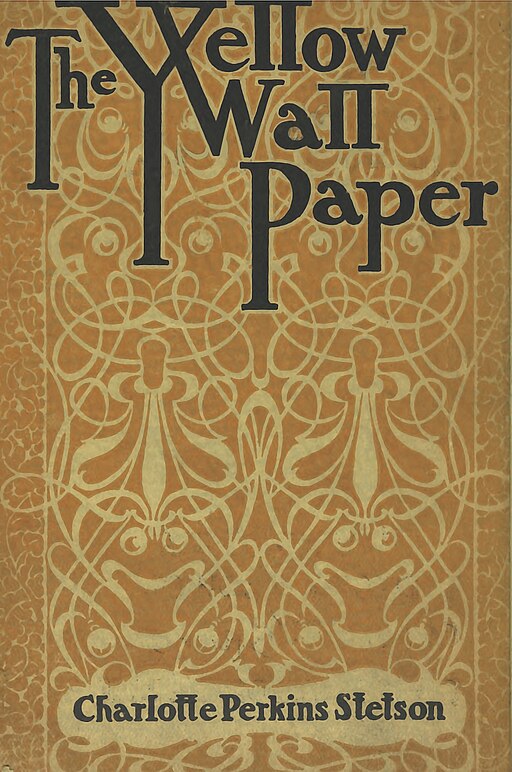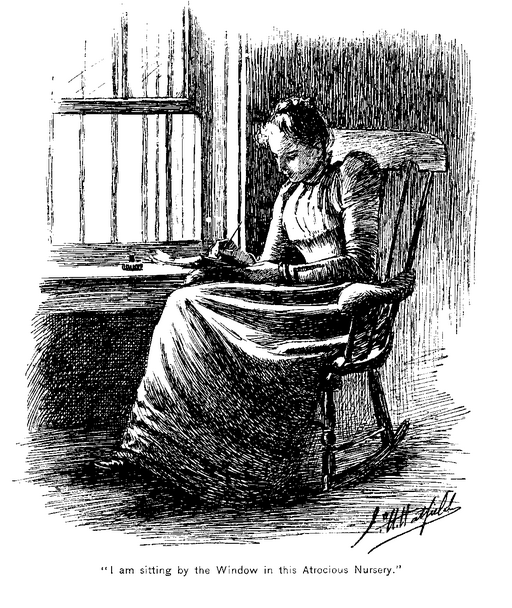By Emma Harrison, Editor

In 1892, Charlotte Perkins Gilman published “The Yellow Wallpaper,” a revolutionary short story that changed the course of women’s healthcare by raising awareness of medical treatment and advocating for women. The story is narrated by an unnamed postpartum woman living with her husband, John. While their home undergoes renovations, the couple moves into a summer house where John, a physician, prescribes his wife a strict “rest cure.” He confines her to an upstairs room, believing that isolation and rest will restore her demeanor, but this treatment ends up having the opposite effect, ending the story with a chilling conclusion.
A huge, significant character in the story is the titular wallpaper plastered to the walls of the narrator’s room, constantly surrounding her. This yellow wallpaper stands out symbolically throughout the story, as Gilman transforms it from a piece of the summer house into a living character. Both physically and metaphorically, the wallpaper represents the narrator’s confinement, her mental decline, and her struggle for identity; it’s a paper prison that blurs the line between object and character, illustrating the destructive power of repression.
The narrator often mentions the bright, sickly yellow color and the wallpaper’s disturbing pattern as if it were a slowly spreading fungus, further mentioning the smell of the paper being “a yellow smell” and the color as a “sickly sulfur tint.” She later states that, “I find it hovering in the dining-room, skulking in the parlor, hiding in the hall, lying in wait for me on the stairs.” In addition to their symbolic meanings, these descriptions could be a hint that the wallpaper was physically weakening her mind and poisoning her, possibly with arsenic, which was popular to use in yellow and green wallpapers at the time.

Along with the psychological effects of the color and smell, the wallpaper symbolizes entrapment under patriarchy and medical authority, and serves as a metaphysical symbol of the oppression women were under in the 1800s-1900s. The bars on the windows and rings in the walls emphasize her imprisonment, making the room resemble a jail or asylum, institutions often used to confine women in that era. The barred windows leave readers feeling trapped, mirroring the narrator’s own confinement throughout the story as both wife and patient, trapped by her husband’s authority as doctor and spouse. The ugly, stifling demeanor of the room also reflects the gender roles the narrator was confined to, which limited her freedom and autonomy.
Throughout the story, the wallpaper’s character seems to encroach on the narrator’s life and sanity as her obsession with it grows, making it seem like an antagonist she must confront, slowly provoking insanity. As the story progresses, the narrator starts to see a “woman” behind the walls at night and in the yard by day. To the readers, this “woman” is believed to be a projection of the narrator’s repressed self; she sees herself trapped in the walls at night, just as she is physically trapped between those four yellow walls.
Because of this, the wallpaper becomes both an enemy and an ally: the walls protect her from her husband and give her peace, but they also create a sense of loneliness and imprisonment. The narrator states, “You think you have mastered it, but just as you get well underway in following, it turns a back-somersault and there you are,” further reflecting her mental state, which is in rapid decline. At the end of the story, she successfully peels away the wallpaper, trying to find the “woman” in the wallpaper that is believed to be a projected illustration of her trapped self. That final peeling away of the wallpaper is a symbolic act of liberation and resolute feminism, but, due to the attitude towards these things at the time, it also coincides with madness. By the end of the story, the narrator found herself, yet in doing so, she slipped once more from the fragile, peeling edges of sanity. Through this powerful symbol, the story exposes the dangers of repression and challenges the social and medical systems that silenced women in the past. This yellow paper prison holds great power as a character to highlight the pain, confusion, and the invisible struggles of misinformation in female health. Gilman critiqued society with metaphors that challenged the pain and confinement women experienced at that time. Since then, this short story has brought awareness to female care in the past, present, and future, encouraging better healthcare and mental health awareness throughout the United States.






